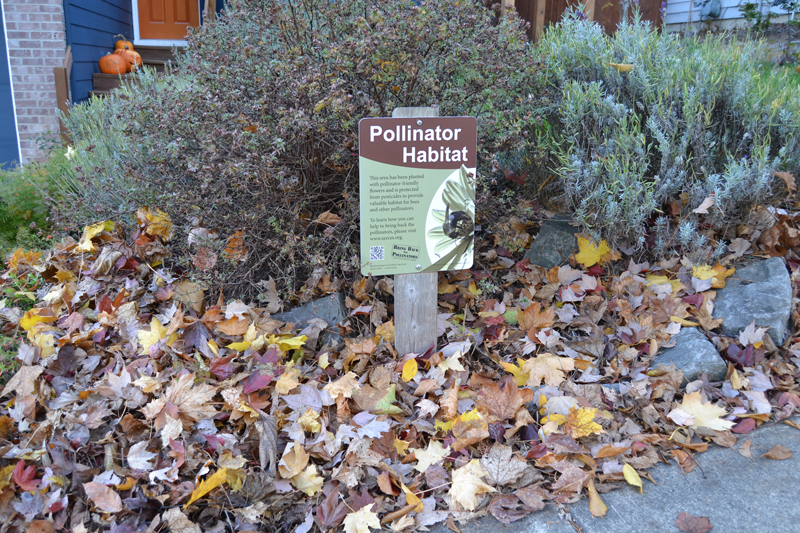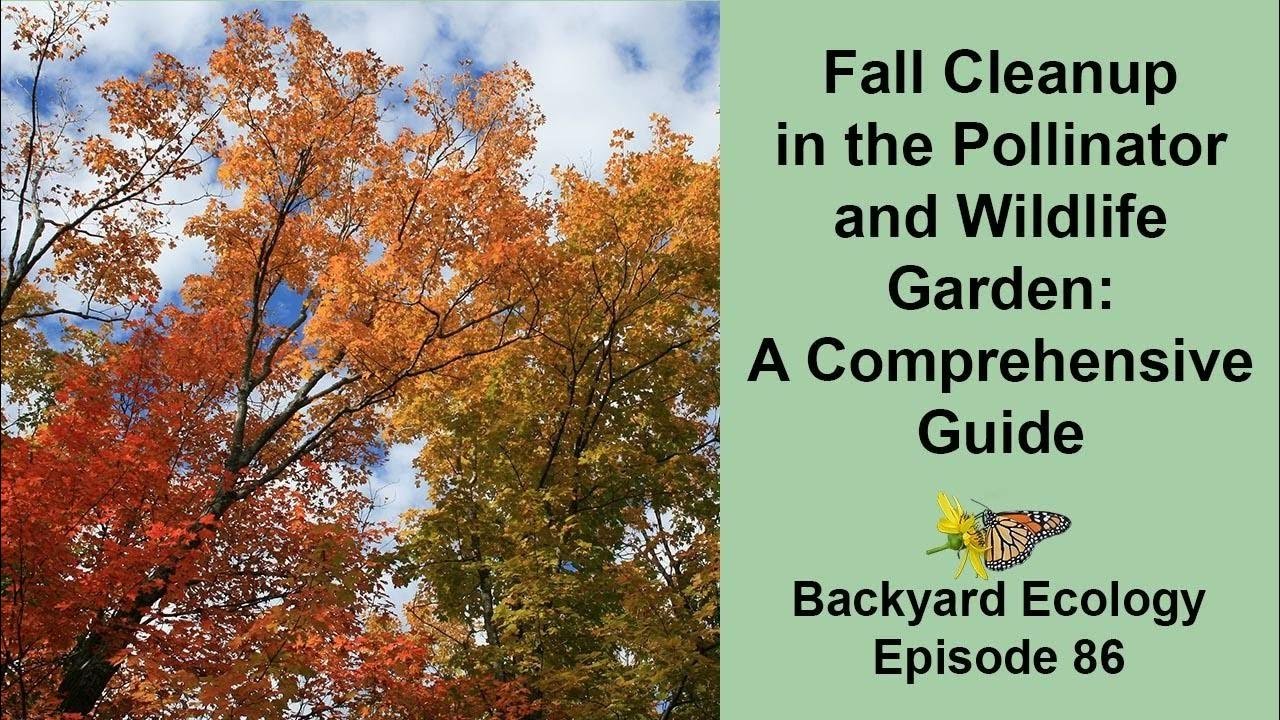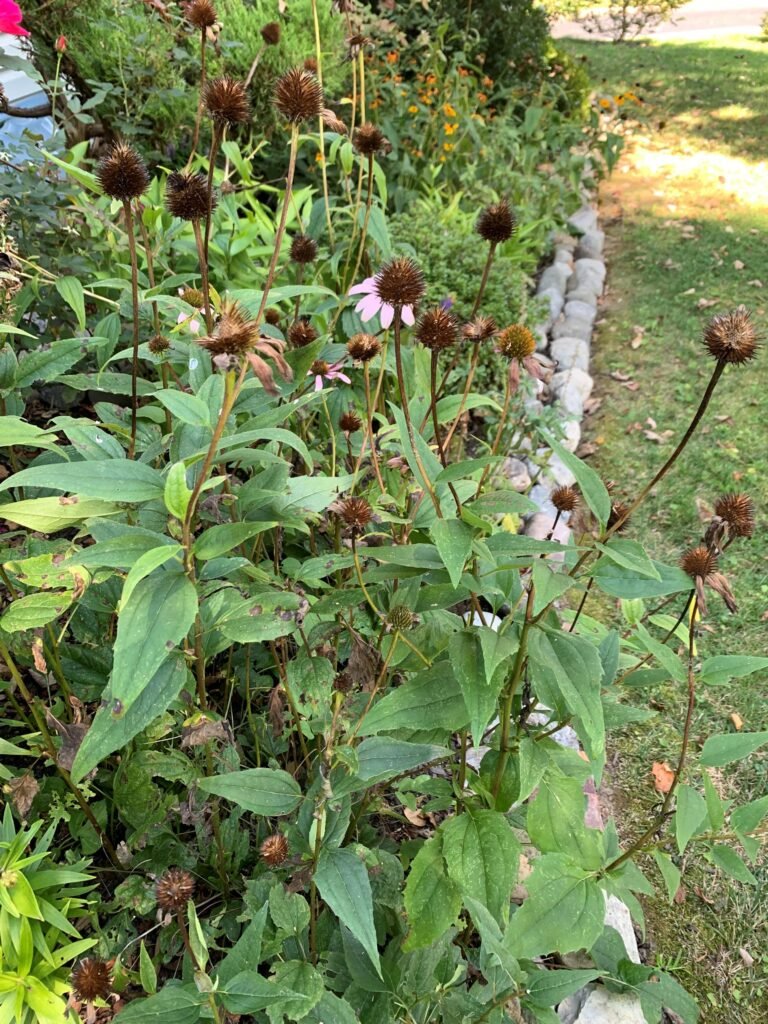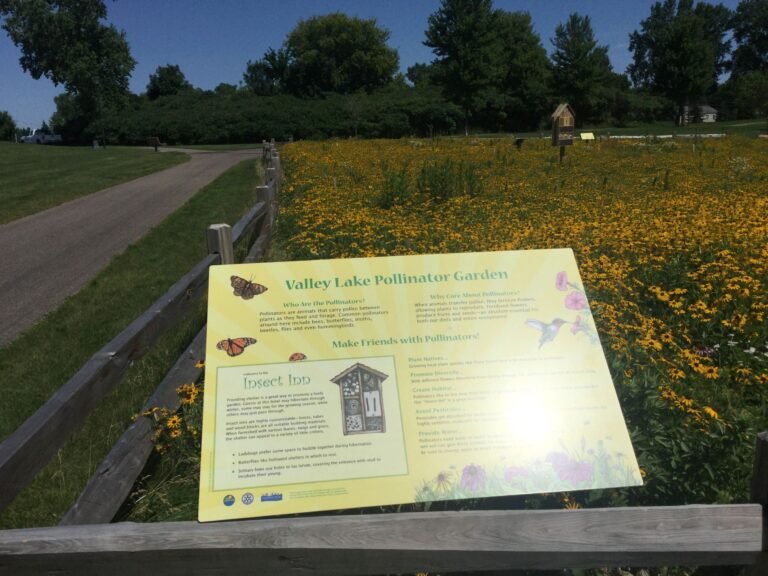As leaves turn amber and the air grows crisp, thoughts turn to prepping gardens for winter. Pollinator gardens need special care.
Fall cleanup is crucial to help these ecosystems thrive. It’s not just about tidying up; it’s about creating a healthy space for pollinators to return to in the spring. These tiny creatures play a big role in our environment, and their habitats require attention.
You don’t need to be an expert gardener to get it right. Start with removing dead plants and debris. This prevents diseases and pests from taking hold. But remember, some insects overwinter in dead stalks and leaves. So, a balance is key. Keep reading to learn simple, effective tips to clean your pollinator garden. By following these steps, you’ll support a vibrant, buzzing garden come spring. This guide will show you the way.

The Importance Of Fall Cleanup For Pollinator Gardens
As leaves turn and autumn settles in, pollinator gardens require attention. Fall cleanup is crucial. It ensures gardens remain inviting and productive for pollinators. It also prepares plants for the coming winter. Cleanup helps maintain a healthy ecosystem for bees, butterflies, and other pollinators.
Benefits To Pollinators During Autumn
- Provides habitat for overwintering insects.
- Offers food sources from late-blooming plants.
- Supports life cycles of pollinator species.
Prepping The Garden For Winter
Good garden prep means protection for plants and pollinators. Remove dead plants that may harbor disease. Yet, leave some leaf litter and dead stalks. They are crucial winter shelters. Mulching is vital. It insulates soil and roots. This provides a warm refuge for pollinators.

Identifying Plants To Keep Or Remove
Clean up your pollinator garden this fall with ease. Know which plants to protect and which to clear out. Keep your garden buzzing with life.
Perennials To Protect
- Leave seed heads – they feed birds.
- Keep hollow stems – homes for bees.
- Trim back selectively – save healthy foliage.
Perennials like coneflowers and black-eyed Susans are vital. Their seeds are food for birds. Their stems shelter insects. Cut back plants with disease or damage. Leave healthy ones for wildlife.
Annuals To Clear Out
- Remove spent annuals – stop disease spread.
- Compost healthy plants – recycle nutrients.
- Pull out weeds – prevent competition.
Annuals like marigolds and zinnias need clearing. They won’t return next year. Pull these out to make room for new growth. Compost plants without signs of disease. This keeps your soil rich. Toss the rest to keep pests and diseases away.
Garden Debris Management
Garden Debris Management plays a key role in preparing pollinator gardens for winter. Proper cleanup helps plants and wildlife thrive. Let’s explore effective ways to manage garden waste.
Composting The Right Way
Composting turns garden waste into valuable soil. Not all debris is good for compost. Here’s how to do it right:
- Use brown and green materials: Balance is crucial. Mix dry leaves with green waste like vegetable peels.
- Avoid diseased plants: They can harm your compost. Throw these out.
- Turn the pile regularly: This adds air. It helps compost break down faster.
What To Do With Fallen Leaves
Fallen leaves offer benefits. They protect soil and provide homes for insects. Here are smart ways to use them:
- Mulch: Shred leaves with a mower. Spread them over soil. This keeps soil warm and moist.
- Leave some leaves: A thin layer on the bed helps bugs and plants.
- Bag extras: Can’t use all your leaves? Bag them. Your city might pick them up.

Balancing Cleanliness With Habitat Preservation
Fall cleanup in a pollinator garden is a delicate dance. It’s about keeping the garden tidy while protecting the wildlife that calls it home. Let’s explore ways to strike the perfect balance.
Leaving Seed Heads For Birds
Come fall, gardens are not just about the last blooms. They’re about feeding our feathered friends. Seed heads from flowers like coneflowers or black-eyed Susans are natural bird feeders. Leaving them standing means more food for birds.
Providing Cover For Overwintering Insects
Insects need shelter to survive the cold. Gardens can offer this by keeping fallen leaves and dead plant stems. These create safe spots for insects to hide and stay warm. Your garden will wake up more lively in spring.
Soil And Mulch Considerations
Soil and Mulch Considerations play a pivotal role in preparing pollinator gardens for fall. Healthy soil supports vibrant plant life, essential for pollinators. Meanwhile, proper mulch can protect these beneficial creatures during colder months. Let’s delve into enhancing soil health and selecting the right mulch for pollinators.
Enhancing Soil Health
Good soil equals healthy plants. It’s that simple. For a thriving pollinator garden, focus on soil enrichment.
- Test soil to understand nutrient needs.
- Add organic compost to boost fertility.
- Avoid chemical fertilizers that harm pollinators.
- Cultivate gently to minimize disturbance.
Choosing The Right Mulch For Pollinators
Selecting mulch is critical for pollinator welfare. Certain types can safeguard against cold, while others may harm.
| Mulch Type | Benefits | Considerations |
|---|---|---|
| Straw or Hay | Insulates soil | Seed-free to prevent weeds |
| Leaves | Recycles nutrients | Shred to avoid matting |
| Wood Chips | Retains moisture | Use sparingly, don’t pile against stems |
Remember, mulch depth should be 3 inches max. This ensures soil breathes and water reaches plant roots.
Pruning Dos And Don’ts
Let’s talk about Pruning Dos and Don’ts for your pollinator garden. Pruning is key to keep plants healthy. It helps in removing dead or diseased branches. This lets more light and air reach the plant. But, it’s important to prune at the right time and in the right way.
Timing Your Pruning
Timing is everything in pruning. Prune your plants after they bloom. This encourages new growth next season. Avoid pruning in late fall. This can harm your plants. They might not survive the cold winter.
- Spring bloomers: Prune right after they flower.
- Summer bloomers: Prune in early spring before new growth.
- Perennials: Cut back in fall or early spring.
Techniques For Healthy Plant Growth
Using the right techniques makes a difference. Sharp tools are a must. They make clean cuts that heal fast. Here’s how to prune for health:
- Cut at a 45-degree angle. This keeps water off, preventing rot.
- Remove dead or sick branches first. This stops disease spread.
- Thin the center. This lets light and air reach all parts of the plant.
Remember, less is more. Do not remove more than 1/3 of a plant at once.
Water Features And Pollinators
Water features play a vital role in pollinator gardens. They provide essential hydration for our buzzing friends. As fall approaches, it’s crucial to prep these water sources for colder weather.
Maintaining Birdbaths And Ponds
Clean birdbaths and ponds regularly. Leaves and debris can harm water quality. Scrub surfaces with a brush and replace water every few days. This helps prevent algae and keeps water fresh for pollinators.
- Remove fallen leaves
- Scrub with a mild soap
- Rinse thoroughly
- Refill with clean water
Winterizing Water Sources
As temperatures drop, protect your water features. Insulate ponds to prevent freezing. Use a pond heater if needed. For birdbaths, consider a heated model or remove them to avoid damage.
| Action | Benefit |
|---|---|
| Insulate ponds | Prevents ice formation |
| Use pond heaters | Keeps water accessible |
| Upgrade to heated birdbaths | Ensures year-round use |
Planning For Next Year’s Garden
Fall cleanup is not just about the present. It sets the stage for next year’s pollinator garden. A good plan now ensures a vibrant, pollinator-friendly space come spring. Let’s dive into steps for a fruitful future.
Reflecting On The Season’s Successes
Take time to note what thrived. Did certain flowers attract more bees or butterflies? Document these successes in a garden journal. This reflection guides next year’s planting decisions.
Incorporating Native Plants For Future Blooms
Native plants are key to a thriving ecosystem. They offer the best support for local wildlife. Research native species that bloom at different times. This ensures a season-long food source for pollinators.
- Review regional plant guides
- Choose varieties for continuous bloom
- Consider plants for different pollinator species
Frequently Asked Questions
What Plants Attract Pollinators In Fall?
Pollinators in fall are attracted to late-blooming plants like asters, goldenrod, and sedum. These provide essential nectar and pollen during cooler months, supporting bees, butterflies, and other beneficial insects as they prepare for winter.
How To Clean A Pollinator Garden In Autumn?
Autumn cleanup in a pollinator garden involves gently removing dead plant material, leaving seed heads for birds, and cutting back perennials. It’s important to wait until several hard frosts have occurred to ensure insects have completed their life cycles.
Why Leave Leaves In A Pollinator Garden?
Leaving leaves in a pollinator garden provides essential habitat for overwintering insects, including pollinators and their larvae. Decomposing leaves also enrich the soil, improving plant health and supporting a vibrant ecosystem.
Is Mulching Necessary In Fall For Pollinator Gardens?
Mulching in fall is beneficial for pollinator gardens. It insulates soil, retains moisture, and suppresses weeds. Organic mulches, like shredded leaves or straw, also provide habitat for beneficial insects, contributing to a healthy garden ecosystem.
Conclusion
As the leaves turn and the days shorten, your pollinator garden needs care. Keep these tips in mind to tidy up while helping winged friends. Clear debris gently, save seeds, and trim with purpose. Remember, a little effort now ensures a thriving, buzzing garden come spring.
Embrace the season’s change and give your garden the attention it deserves. Your pollinators will thank you, and so will your future blooms. Let’s get those gloves on and make a difference for our tiny guests. Ready for a beautiful garden next year?
Start this fall!



